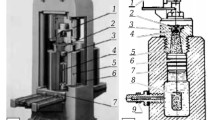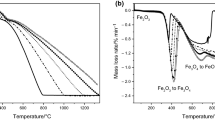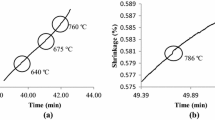Conclusions
As the oxygen content of the brass powders obtained by water atomization increases, the thickness of the oxide films forming around the particle increases in that the quantity of dissolved oxygen remains unaltered. Satisfactory properties of the sintered products can be achieved using powders having an oxygen content up to O.23 wt.% and a uniform thickness of the oxide films. The optimum sintering temperature increases with increasing oxygen content; however, it is possible to establish a regime that ensures attainment of stable properties of the desired level in the materials obtained from the powders containing oxygen in the O.8–O.23 wt.% range.
Similar content being viewed by others
Literature cited
A. V. Dovydenkova, V. L. Sergeev, V. A. Chernov, et al., “Effect of oxygen content on the physical and mechanical properties of the products obtained from brass powders,” Poroshk. Metall, No. 9, 96–98 (1988).
Additional information
Translated from Poroshkovaya Metallurgiya, No. 4(328), pp. 44–47, April, 1990.
Rights and permissions
About this article
Cite this article
Dovydenkova, A.V., Sergeev, V.L., Chernov, V.A. et al. Sintering of brass powders having different oxygen contents. Powder Metall Met Ceram 29, 292–295 (1990). https://doi.org/10.1007/BF00797229
Received:
Issue Date:
DOI: https://doi.org/10.1007/BF00797229




